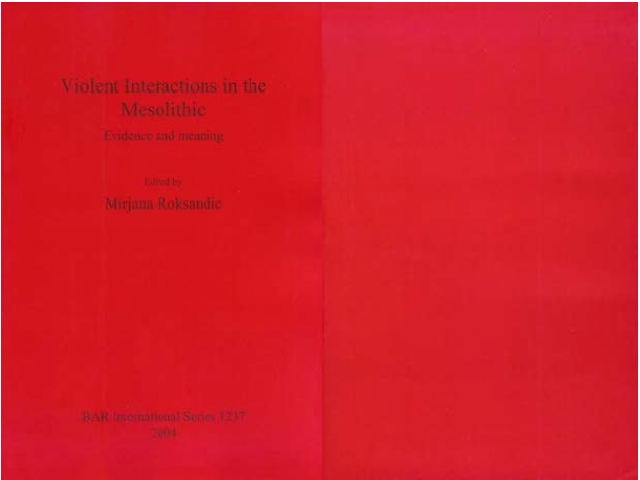Roksandic, M. Ed. 2004. Violent interactions in the Mesolithic. Evidence and meaning. – Oxford, Archaeopress (British Archaeological Reports International Series 1237)
Abstract
The volume starts with a very adequate question: why another book on violence in prehistory? The Mesolithic is said to be the period when the evidence for violence becomes far more common than in earlier periods. The editor of the book, Roksandic, questions that statement. However, she accepts that we can demonstrate higher levels of conflict in this period than in previous periods.
Other questions of importance are: How to relate an individual’s violent interaction and death to the interpretation of organised violence? Is all organised violence warfare? Can all violence be interpreted as warfare? Do we need to draw a line between warfare and feuding? The last two questions are related to how we define war. If war is related to higher levels of political organisation, then conflict between groups should be described as something else. Another aspect is the importance of war, whether it is an interactive part in the shaping and organisation of a society or episodic events without further impact on the society.
In this presentation much argumentation is derived from Kelly’s book ‘Warless societies and the origin of war (2000). His view (p. 21) that war is to be grounded “in application of the principle of social substitutability”, the interrelated concept of injury to the group, group responsibility for injury and group liability with respect to retribution, is accepted. Read more...
Downloads




